Kathryn Harkup looks at how Agatha Christie used her chemical training in her detective novels
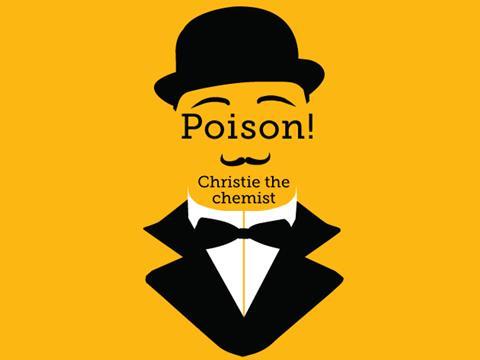
A little old lady knits while she talks about the dangers of prescription drugs. Elsewhere, a book is carelessly left open on the page that describes the extraction of ricin. In another house, small colourless crystals are found scattered over a tea tray – they look like sugar but they could be something else. Hidden away from prying eyes, a flask of insecticide boils and a lethal quantity of nicotine slowly drips from a condenser. In a laboratory, a chemist looks over his stocks and wonders whether that bottle of hemlock extract was full yesterday. And at an English country house, a funny little man with magnificent moustaches carefully drains the contents of a coffee cup into a test tube. We can only be in the world of Agatha Christie.
There are millions of Christie fans around the world and I count myself as one of them. As a teenager reading her novels I loved Hercule Poirot’s pernickity ways, as well as the gentle humour and brilliant puzzles Christie presented. Now, reading Christie as an adult with a degree and PhD in chemistry, it is her use of poisons that fascinates me.
What’s your poison?
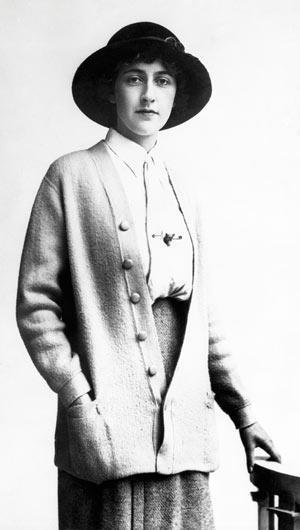
Christie is not unique among crime fiction writers in using poisons in her plots, but what marks her out from the rest is how often and accurately she used them, as well as the extraordinary range of compounds her villains employed.1
Christie’s knowledge of chemistry and poisons began when she volunteered to work in the hospital in Torquay during the first world war. She trained as an apothecaries’ assistant in the hospital dispensary, which involved learning both theoretical and practical aspects of chemistry. Once qualified, she made up prescriptions, a highly skilled job at a time when all pills, lotions and tonics were made by hand.
When Christie began her training, the metric system of measurement was starting to overtake the imperial system of grains and drams. This change occasionally led to miscalculations and potentially dangerous quantities of drugs being dispensed, as Christie knew from personal experience. Her writing career also spanned a time of huge change in the drugs available to medicine. In the early 20th century, compounds such as strychnine and arsenic were falling out of medical use and barbiturate prescriptions steadily increased, both in number and variety, as the century progressed.
It was when Christie was working as a dispenser that she first had the idea to write a detective novel. Surrounded by bottles of poison it is little wonder that she chose poisons for her method of murder. In fact, her first novel, The mysterious affair at Styles, uses not one but a conjunction of three compounds and a degree of chemical knowledge to dispatch her victim.
The chemistry of crime
In the early hours of the morning, Mrs Inglethorp is found in her bed in the throes of agonising convulsions. Even the slightly obtuse Captain Hastings recognises the dramatic arching of the back, leaving only the head and feet resting on the bed, as a sign that strychnine has been administered to the unfortunate woman.
Strychnine is an extremely bitter-tasting alkaloid found in the seeds of the shrub Strychnos nux-vomica. The compound disrupts nerve function by blocking glycine receptors on motor neurones. Glycine is used to moderate the activity of the neurotransmitter acetylcholine. When glycine binds to its receptor it deactivates the nerve, whereas acetylcholine activates the same cell. Strychnine disrupts the effects of glycine and the result is that acetylcholine has a more pronounced effect on the nerve cell.
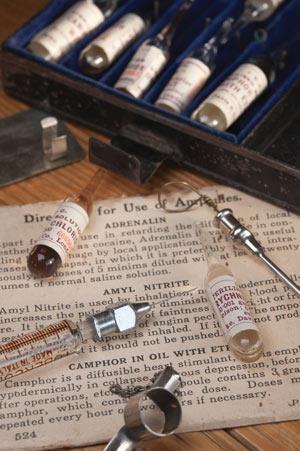
Strychnine was once used in low doses in tonics because it was believed to have a beneficial stimulating effect on nerves. In addition, the bitter taste was thought to have the benefit of increasing appetite. Neither of the claims is true and strychnine was eventually removed from the pharmacopoeia.
Aside from the lack of benefit to the body, the real problem with strychnine is the relatively narrow gap between the supposedly therapeutic dose and the lethal dose. A mere 100mg is enough to overwhelm the glycine receptors and send the nerves firing out of control. Symptoms start approximately 15 minutes after ingestion with twitching, but progresses to horrific convulsions of the whole body as the nervous system careers out of control. Death eventually occurs because the muscles used for breathing are paralysed. The lethal potential of strychnine also led to its use as a pesticide, although its use is now banned in Europe because it causes unnecessary suffering.
In the Styles household, there is plenty of strychnine available to any would-be poisoner. There are packets and bottles of strychnine in the form of pesticides and tonics. And, if that wasn’t enough, one member of the household works in a hospital dispensary with access to stores of ‘medicinal’ strychnine. The mystery is which source the murderer made use of and how the drug was administered to Mrs Inglethorp.
Thankfully, a legendary Belgian detective is on hand to sort through the red herrings and arrive at the truth. Poirot deduces that the strychnine that killed Mrs Inglethorp came from her own tonic. This prescription contained a lethal dose of strychnine sulfate but highly diluted and taken in doses of one spoonful at a time. There was no miscalculation when the prescription was made and unless the lady swallowed the whole bottle in one, no harm should have come to her. However, the murderer had added a second compound to the tonic, bromide powders (commonly prescribed as a sedative in the early 20th century). The bromide ions displace the sulfate counterions, causing insoluble strychnine bromide to precipitate. Therefore, when she takes the final dose from the bottle, Mrs Inglethorp swallows almost the entire quantity of strychnine.
The third compound in Christie’s equation is morphine, or a similar narcotic. This was added to Mrs Inglethorp’s evening cocoa to delay the action of the strychnine and divert attention from the tonic. Morphine and other opiates slow the muscles that move food through the gut and can delay the stomach emptying by several hours. Strychnine salts cannot be absorbed into the body from the acidic environment of the stomach but they are readily absorbed from the slightly alkali conditions of the small intestines.
The accuracy of Christie’s chosen method is in no doubt. An almost identical real life case of strychnine poisoning is cited in The art of dispensing, a book Christie would have studied for her apothecaries’s assistant examinations. A review of The mysterious affair at Styles from the Pharmaceutical Journal, one that Christie prized above all others, stated ‘This novel has the rare merit of being correctly written’ and went on to speculate that the author had pharmaceutical training or had called in an expert. The novel has even been suggested as a suitable text for chemistry students.2
The mysterious affair at Styles was the start of a long and hugely successful career in crime fiction. Christie’s interest in drugs and poisons continued throughout her career and she often consulted experts when new drugs entered the market. Her plots rarely involved guns as she freely admitted she knew nothing about ballistics. Chemical clues, however, are fairly abundant and a fantastic example can be found in the 1937 novel Dumb witness.
Not so dumb
Emily Arundell, a wealthy spinster with quite a few avaricious relatives, dies after taking part in a sõance. A strange glowing halo of light is seen to issue from her mouth. Is it an aura? Ectoplasm? A premonition of death? Or chemiluminescence from the white phosphorus she has ingested?
White phosphorus (P4) is highly reactive, with a particularly strong affinity for oxygen. When exposed to air, it will react with oxygen producing an eerie green glow in the process. If the slightest source of ignition is present, however, the phosphorus will burn vigorously producing an intense heat and thick clouds of white smoke. Hence white phosphorus has been used for tracer bullets, smoke screens and incendiary bombs in warfare. Contact with the skin can cause serious damage because of white phosphorus’s reactive nature. Furthermore, inhaling white phosphorus vapour over a long period can lead to the highly distressing, disfiguring and sometimes fatal condition of ‘phossy jaw’, which first appeared in match workers in the 19th century. In short, there are many ways that white phosphorus can harm you.
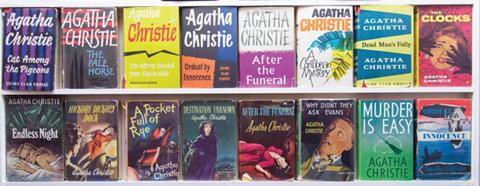
It is the toxic effects of white phosphorus that concern Christie in Dumb witness. From a murderer’s point of view, ingestion is the most reliable method of causing death, and less likely to be detected than those mentioned above. As little as 100mg of white phosphorus can kill an adult by ingestion and the symptoms can appear similar to natural causes, such as a ruptured ulcer. There will be vomiting, often bloody from tissue corrosion, and intense pain in the abdomen. The key differences to a natural disease is that the vomit may smoke as the white phosphorus reacts with the air, and there will be an unpleasant smell, often described as ‘garlicy’ by those unaccustomed to sniffing phosphorus-based compounds. The initial symptoms may subside and the victim may believe they are recovering. But if enough phosphorus has been absorbed, this is not the case and worse is to come. After a short respite the symptoms return, but more severely and accompanied by a raging thirst. Death follows approximately three days after ingestion.
Phosphorus is lipophilic and easily crosses the lipid bilayer of cell membranes in the gastrointestinal tract to enter the bloodstream, especially if it is accompanied by a fatty or greasy meal. It will accumulate in the liver, where it causes the real damage. Although the exact mechanism has not been elucidated, phosphorus is thought to damage cells through a free radical process. Once the liver is damaged beyond repair, the rest of the body is exposed to toxins normally eliminated by the organ, and death from liver failure ensues within days.
At post-mortem, the damage done to the liver by the phosphorus can look very similar to the damage normally caused by liver disease or alcohol. But there are other tell-tale signs that a pathologist can look for. The distinct odour of phosphorus compounds might be detected in the viscera. If large amounts of phosphorus have been ingested, then the characteristic glow may be visible in the gastrointestinal tract if the pathologist turns out the lights. Also, phosphorus can be easily isolated from human tissue by heating the liquidised remains over a water bath. The volatile phosphorus fumes condense in the apparatus and can be seen to glow in the dark.
Emily, the victim in Dumb witness, suffered from liver disease, a fact the murderer used to great advantage. Emily was in the habit of taking liver capsules after her evening meal and the murderer added white phosphorus to one of the capsules assuming any illness and damage to the liver would be attributed to her existing liver condition. But the glowing vapour seen to emerge from her mouth during the sõance gave Poirot the clue he needed. Poirot describes the phenomenon as phosphorescence, not chemiluminescence – a slight but understandable mistake given that the novel was written before the mechanism of phosphorus’s glow had been determined. In all other respects, Christie is as accurate as she always is. She even helpfully describes how the poisoner could obtain phosphorus, from rat poison or match heads.
A poisoner’s handbook
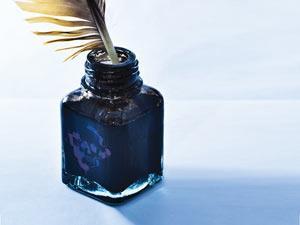
Anyone thinking of copying Christie’s methods should know that obtaining the lethal compounds she describes so well is much more difficult today than it was in her time. Even those of you with access to lethal compounds in the lab should think carefully about what uses you put them to. Sophisticated methods of detection and dedicated toxicologists mean you are very unlikely to get away with poisoning today.
There are many other examples of Christie’s knowledge of chemistry, far too many to detail here. Litmus paper is used to make it appear as though flowers on the wallpaper of a sick-room turn from red to blue, using the patient’s own ammonium smelling salts (The blue geranium) and the synthesis of apomorphine from morphine is described in Sad cypress. Formic acid is even distilled from ants in The Lemesurier inheritance.
There are many reasons to love Agatha Christie’s work, but reading her stories from a chemistry perspective has given me a whole new appreciation of her creativity, cunning plots and attention to detail. Enjoy her books, look out for the chemistry clues – but don’t expect it to make it any easier to work out whodunnit.
Kathryn Harkup, based in Guildford, UK, is the author of A is for arsenic, which is published by Bloomsbury.
References
1 P R Gwilt and J R Gwilt, Pharm. J., 1978, 28, 572
2 R E Southward, W G Hollis Jr and D W Thompson, J. Chem. Ed., 1992, 69, 536 (DOI: 10.1021/ed069p536)
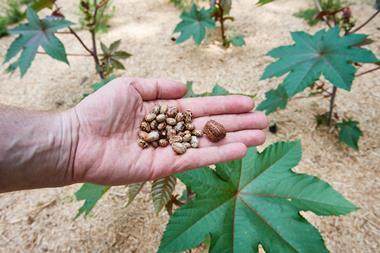


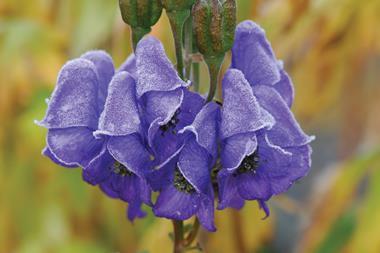








No comments yet